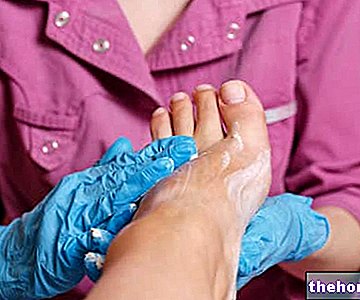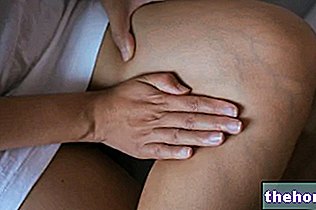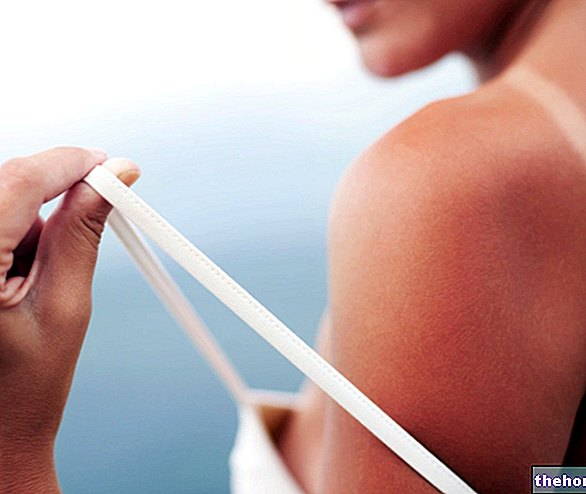Prevention of intertrigo
Obese or obviously overweight people and infants are at high risk of intertrigo: for this reason, it would be useful to prevent this annoying disorder by applying protective pastes or adsorbent powders (talcs) once or more times a day, particularly useful for allowing the perspiration.

Another rule to keep in mind is the drying of the area: in addition to being thoroughly cleaned, the skin folds, inguinal, retro-auricular, interdigital furrows, etc., require careful drying, since any stagnation of water in these sites could facilitate the maceration of the skin, therefore intertrigo.
Furthermore, for those subjects particularly sensitive to intertrigo, it is necessary that the underwear is made of cotton, in order to allow the skin to breathe: synthetic fibers are therefore not recommended, since they tend to suffocate the skin and, preventing perspiration, to favor the stagnation of sweat, generating redness and triggering that chain mechanism that inevitably ends with bacterial colonization, generating intertrigo.
In conclusion, subjects who are obviously overweight and obese should follow the rules dictated by food education and a hypochloric and balanced diet.
Natural remedies
If the disease is minor, the herbalist offers a wide range of products for topical use for the recovery of the intertrigo: protective pastes, talcs (adsorbent powders) and oleolites (oily concentrates obtained from vegetable substances macerated in oil ) are three categories of products particularly indicated in case of intertrigo. Obviously, when dermatitis presents an "evident skin maceration, herbal products are no longer sufficient and must possibly be associated with specific pharmaceutical specialties (eg antibiotics), indicated by the doctor.
Among the most effective natural remedies against intertrigo are mentioned:
- Hypericum oil (Hypericum perforatum): promotes wound healing, disinfects the area (antiseptic properties), acts as a natural antibiotic thanks to hyperforin and promotes re-epithelialization; particularly useful in case of intertrigo.
- Aloe vera (Aloe vera gel): particularly suitable for its restorative and refreshing properties, useful for ensuring the patient a feeling of immediate freshness. Wound healing is favored by the presence of organic acids, vitamins and polysaccharides.
- Grapefruit seeds (Citrus × paradisi): the phytocomplex extracted from grapefruit seeds, rich in bioflavonoids and terpenes, is useful as a disinfectant against bacteria and fungi that colonize the folds of the skin in those subjects suffering from intertrigo.
- Shea butter (Butyrospermum parkii) or liquid jojoba wax (Simmondsia chinensis): basic components in the formulation of protective pastes: their eudermic, elasticizing, restorative and nourishing properties offer many advantages to irritated skin, typical of intertrigo.
- Cornstarch (Zea mays L.), zinc oxide, Rice (Oryza sativa) and oats (Avena sativa): especially indicated for suppurating wounds, as they act as soothing, astringent and calm the itching caused by intertrigo (basic components of talcs).
Summary
To fix the concepts ...
- Obviously overweight and obese subjects
- Intergluteal and inguinal crural folds in newborns
- Sweat that stagnates in the folds of the skin
- Slightly alkaline stools that tend to "corrode" the skin (caused by the diaper)
- Habitual use of too tight footwear, synthetic material and diapers
- Poor hygienic conditions and incorrect personal hygiene
- Candida albicans
- Fungi like that Epidermophyton
- Staphylococcus aureus
- Streptococcus piogene
- Pseudomonas aeruginosa
Unusual intertrigo: angular stomatitis and pyogenic perionysis
Evolution: more marked and painful maceration of the skin, cracks, intense pain, bleeding, fissures, blisters and pustules often smelly
Severe degeneration: septic dermatitis or impetiginized intertrigo
- Swab
- Careful microscopic examination
- Biopsy
- pain relievers or mild natural anesthetics
- antifungal / antibiotic ointments or lotions, combined with nourishing and restorative / healing creams
- Apply protective pastes or adsorbent powders one or more times a day
- Thorough cleaning of the area
- Discard irritating or low-quality products
- Thorough drying of the area
- Cotton underwear
- Follow the rules dictated by food education and a hypochloric and balanced diet
- St. John's wort oil
- Aloe vera
- Grapefruit seeds
- Shea butter, Jojoba oil
- Corn starch and oats
- Zinc oxide, Rice
Other articles on "Intertrigo: Prevention and Natural Remedies"
- Intertrigo
- Intertrigo - Drugs for the treatment of Intertrigo





-cause-sintomi-e-cura.jpg)



.jpg)


















